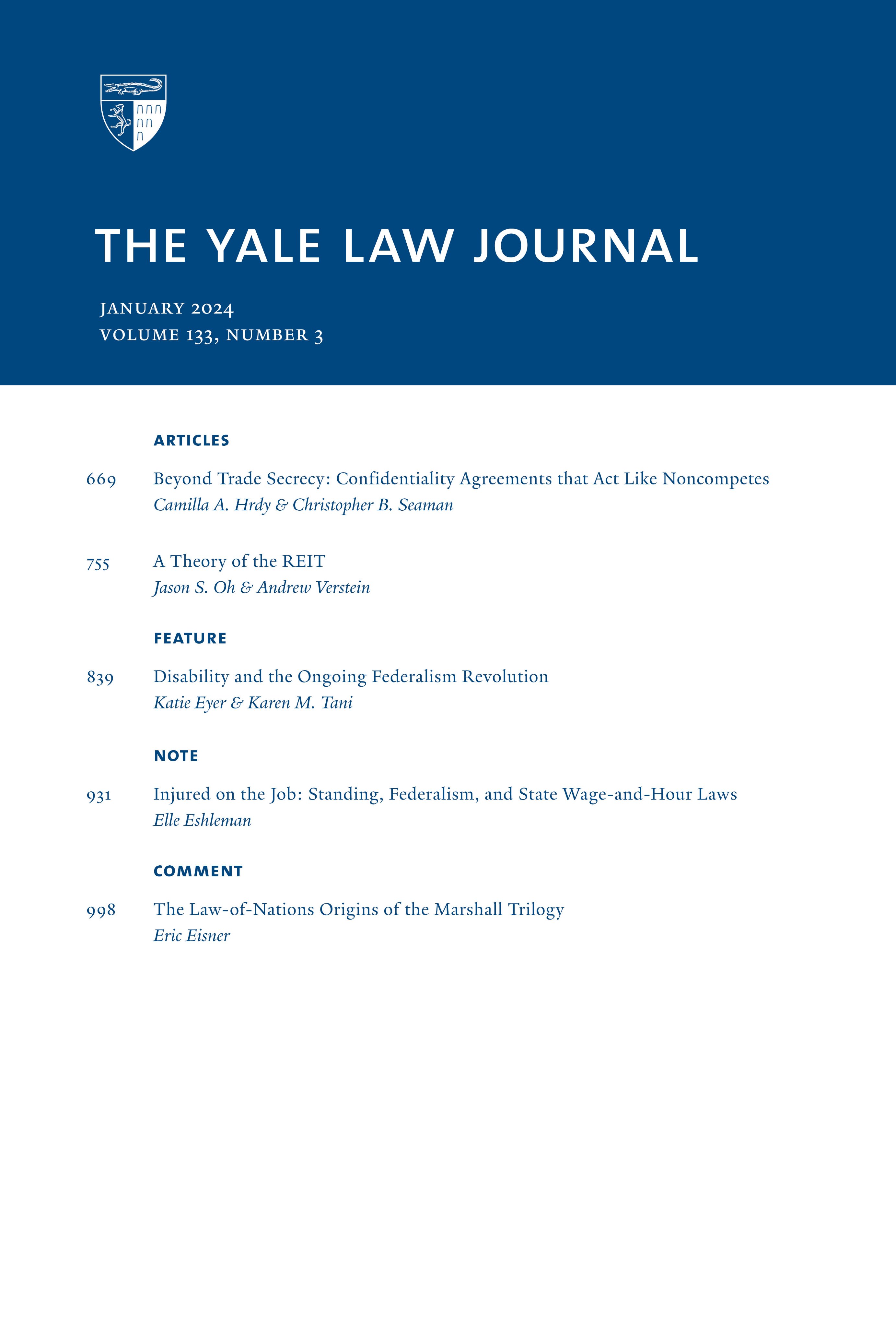Aggregation and Law
IF 5.2
1区 社会学
Q1 LAW
引用次数: 14
Abstract
If a plaintiff brings two claims, each with a 0.4 probability of being valid, the plaintiff will usually lose, even if the claims are based on independent events, and thus the probability of at least one of the claims being valid is 0.64. If a plaintiff brings two independent claims, and each of them is too weak to justify a remedy, the plaintiff will usually lose, even if the claims are jointly powerful enough to justify a remedy. Thus, as a general rule courts refuse to engage in what we call factual aggregation (the first case) and normative aggregation (the second case). (We also identify other forms of aggregation.) Yet we show numerous exceptions to this rule in private and public law. Notably, in public law the hybrid rights doctrine permits courts to aggregate two weak constitutional claims as long as one involves free exercise of religion. In private law, certain tort and contract doctrines also permit aggregation. We criticize the courts’ inconsistent approaches to aggregation, and propose conditions under which courts should (and should not) aggregate.聚合与定律
如果原告提出两项索赔,每项索赔的有效概率都是0.4,那么原告通常会败诉,即使这些索赔是基于独立的事件,因此至少一项索赔有效的概率是0.64。如果原告提出两项独立的索赔,而每一项都太弱,不足以证明救济的正当性,那么原告通常会输,即使这些索赔联合起来足以证明救济的正当性。因此,作为一般规则,法院拒绝参与我们所谓的事实汇总(第一种情况)和规范汇总(第二种情况)。(我们还指出了其他形式的聚合。)然而,我们在私法和公法中指出了这一规则的许多例外。值得注意的是,在公法中,混合权利原则允许法院将两项薄弱的宪法要求合并在一起,只要其中一项涉及宗教自由。在私法中,某些侵权和契约理论也允许聚合。我们批评法院不一致的汇总方法,并提出法院应该(或不应该)汇总的条件。
本文章由计算机程序翻译,如有差异,请以英文原文为准。
求助全文
约1分钟内获得全文
求助全文
来源期刊

Yale Law Journal
LAW-
CiteScore
4.50
自引率
6.20%
发文量
0
期刊介绍:
The Yale Law Journal Online is the online companion to The Yale Law Journal. It replaces The Pocket Part, which was the first such companion to be published by a leading law review. YLJ Online will continue The Pocket Part"s mission of augmenting the scholarship printed in The Yale Law Journal by providing original Essays, legal commentaries, responses to articles printed in the Journal, podcast and iTunes University recordings of various pieces, and other works by both established and emerging academics and practitioners.
 求助内容:
求助内容: 应助结果提醒方式:
应助结果提醒方式:


